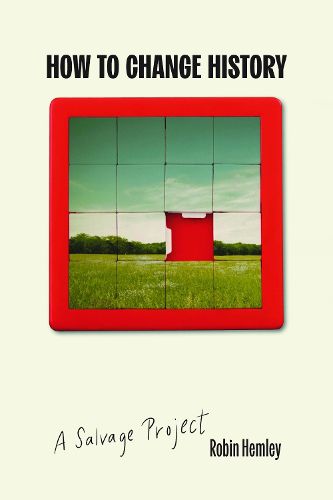Readings Newsletter
Become a Readings Member to make your shopping experience even easier.
Sign in or sign up for free!
You’re not far away from qualifying for FREE standard shipping within Australia
You’ve qualified for FREE standard shipping within Australia
The cart is loading…






In How to Change History Robin Hemley grapples with the individual's navigation of history and the conflict between personal and public histories. In an attempt to restore, resurrect, and reclaim what might otherwise be lost, Hemley meditates and speculates on photography, scrapbooks, historical markers, travelogues, TV shows, real estate come-ons, washed up rock stars, incontinent dachshunds, stalkers, skeletons in the closet, and literature. He also examines his parents' lives as writers, documenting their under-seen influence on the art movements of the day.
In one essay, he writes about his mother's first cousin, Roy, a survivor of Pearl Harbor whose troubled daughter murdered him. The essay "Jim's Corner" examines the notion of memorial plaques and how they often highlight erasure rather than forestall it. Hemley writes about a stranger whose World War II experiences were chronicled in a scrapbook Hemley bought at an estate sale. In this book about reconstruction, Hemley posits that while we cannot change events once they have passed, we can return to those events to learn and sometimes perhaps change our understanding of them.
$9.00 standard shipping within Australia
FREE standard shipping within Australia for orders over $100.00
Express & International shipping calculated at checkout
In How to Change History Robin Hemley grapples with the individual's navigation of history and the conflict between personal and public histories. In an attempt to restore, resurrect, and reclaim what might otherwise be lost, Hemley meditates and speculates on photography, scrapbooks, historical markers, travelogues, TV shows, real estate come-ons, washed up rock stars, incontinent dachshunds, stalkers, skeletons in the closet, and literature. He also examines his parents' lives as writers, documenting their under-seen influence on the art movements of the day.
In one essay, he writes about his mother's first cousin, Roy, a survivor of Pearl Harbor whose troubled daughter murdered him. The essay "Jim's Corner" examines the notion of memorial plaques and how they often highlight erasure rather than forestall it. Hemley writes about a stranger whose World War II experiences were chronicled in a scrapbook Hemley bought at an estate sale. In this book about reconstruction, Hemley posits that while we cannot change events once they have passed, we can return to those events to learn and sometimes perhaps change our understanding of them.